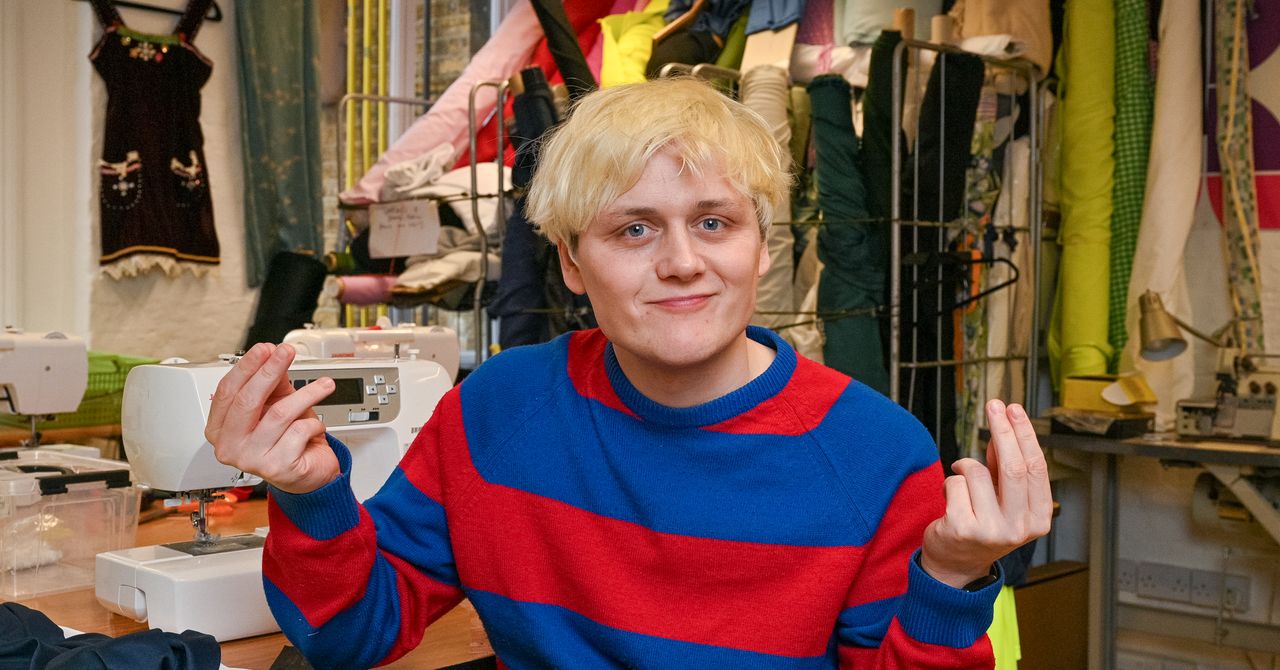Tech
How to ensure youth, parents, educators and tech companies are on the same page on AI

Artificial intelligence is now part of everyday life. It’s in our phones, schools and homes. For young people, AI shapes how they learn, connect and express themselves. But it also raises real concerns about privacy, fairness and control.
AI systems often promise personalization and convenience. But behind the scenes, they collect vast amounts of personal data, make predictions and influence behavior, without clear rules or consent.
This is especially troubling for youth, who are often left out of conversations about how AI systems are built and governed.
Concerns about privacy
My research team conducted national research and heard from youth aged 16 to 19 who use AI daily—on social media, in classrooms and in online games.
They told us they want the benefits of AI, but not at the cost of their privacy. While they value tailored content and smart recommendations, they feel uneasy about what happens to their data.
Many expressed concern about who owns their information, how it is used and whether they can ever take it back. They are frustrated by long privacy policies, hidden settings and the sense that you need to be a tech expert just to protect yourself.
As one participant said, “I am mainly concerned about what data is being taken and how it is used. We often aren’t informed clearly.”
Uncomfortable sharing their data
Young people were the most uncomfortable group when it came to sharing personal data with AI. Even when they got something in return, like convenience or customization, they didn’t trust what would happen next. Many worried about being watched, tracked or categorized in ways they can’t see.
This goes beyond technical risks. It’s about how it feels to be constantly analyzed and predicted by systems you can’t question or understand.
AI doesn’t just collect data, it draws conclusions, shapes online experiences, and influences choices. That can feel like manipulation.
Parents and teachers are concerned
Adults (educators and parents) in our study shared similar concerns. They want better safeguards and stronger rules.
But many admitted they struggle to keep up with how fast AI is moving. They often don’t feel confident helping youth make smart choices about data and privacy.
Some saw this as a gap in digital education. Others pointed to the need for plain-language explanations and more transparency from the tech companies that build and deploy AI systems.
Professionals focus on tools, not people
The study found AI professionals approach these challenges differently. They think about privacy in technical terms such as encryption, data minimization and compliance.
While these are important, they don’t always align with what youth and educators care about: trust, control and the right to understand what’s going on.
Companies often see privacy as a trade-off for innovation. They value efficiency and performance and tend to trust technical solutions over user input. That can leave out key concerns from the people most affected, especially young users.
Power and control lie elsewhere
AI professionals, parents and educators influence how AI is used. But the biggest decisions happen elsewhere. Powerful tech companies design most digital platforms and decide what data is collected, how systems work and what choices users see.
Even when professionals push for safer practices, they work within systems they did not build. Weak privacy laws and limited enforcement mean that control over data and design stays with a few companies.
This makes transparency and holding platforms accountable even more difficult.
What’s missing? A shared understanding
Right now, youth, parents, educators and tech companies are not on the same page. Young people want control, parents want protection and professionals want scalability.
These goals often clash, and without a shared vision, privacy rules are inconsistent, hard to enforce or simply ignored.
Our research shows that ethical AI governance can’t be solved by one group alone. We need to bring youth, families, educators and experts together to shape the future of AI.
The PEA-AI model
To guide this process, we developed a framework called PEA-AI: Privacy–Ethics Alignment in Artificial Intelligence. It helps identify where values collide and how to move forward. The model highlights four key tensions:
- Control versus trust: Youth want autonomy. Developers want reliability. We need systems that support both.
- Transparency versus perception: What counts as “clear” to experts often feels confusing to users.
- Parental oversight versus youth voice: Policies must balance protection with respect for youth agency.
- Education versus awareness gaps: We can’t expect youth to make informed choices without better tools and support.
What can be done?
Our research points to six practical steps:
- Simplify consent. Use short, visual, plain-language forms. Let youth update settings regularly.
- Design for privacy. Minimize data collection. Make dashboards that show users what’s being stored.
- Explain the systems. Provide clear, non-technical explanations of how AI works, especially when used in schools.
- Hold systems accountable. Run audits, allow feedback and create ways for users to report harm.
- Teach privacy. Bring AI literacy into classrooms. Train teachers and involve parents.
- Share power. Include youth in tech policy decisions. Build systems with them, not just for them.
AI can be a powerful tool for learning and connection, but it must be built with care. Right now, our research suggests young people don’t feel in control of how AI sees them, uses their data or shapes their world.
Ethical AI starts with listening. If we want digital systems to be fair, safe and trusted, we must give youth a seat at the table and treat their voices as essential, not optional.
This article is republished from The Conversation under a Creative Commons license. Read the original article.![]()
Citation:
How to ensure youth, parents, educators and tech companies are on the same page on AI (2025, October 23)
retrieved 24 October 2025
from https://techxplore.com/news/2025-10-youth-parents-tech-companies-page.html
This document is subject to copyright. Apart from any fair dealing for the purpose of private study or research, no
part may be reproduced without the written permission. The content is provided for information purposes only.
Tech
How Data Centers Actually Work

Lauren Goode: Well, they’re all interested in growing more. Who among us, Mike? But the hyperscalers refers to this class of major tech companies or cloud service providers. So Meta, Amazon, Microsoft, Google, they’re all in that category.
Molly Taft: Yeah, and I think it’s important to remember that these companies have so much money and they have an ability to raise capital like nobody’s business. So they’re able to do some really crazy stuff to build quick and to build-out really, really big. And they’re getting pretty creative, because their goals right now are to build these things quickly and get them up and running so they can basically use this physical infrastructure to compete with each other.
Lauren Goode: I think that’s right, Molly. I think there’s a lot of frenemy building happening right now, and I would just love to be a part of their group chats when all of these announcements are being made.
Michael Calore: Yeah, and speaking of frenemies, the other sphere of influence that these companies are operating in is the political sphere. Obviously, in order to build a giant data center somewhere, you need to have the political will to do it, which means you need buy-in from the local residents, the local government, the state, the country. So what’s happening in the political sphere with folks who want to build more data centers and people who oppose it, regulation? How is that playing out?
Molly Taft: That’s a great question, and I think if you look at the national conversation, it’s quite different than what’s happening on the local level. You have Washington, you obviously have an administration that is very friendly to the idea of an American AI empire. Importantly for the energy conversation, the way that the Trump administration has approached this support has been through support of fossil fuels. They would really like for all data centers to be powered with oil and gas, a little bit of nuclear and coal. And this works out great for those industries as well. If you’re going to have this massive expansion of power demand, it’s really cool to be in the middle of that and be the one that everyone wants to turn to for energy resourcing. And then on the other side, there has been this influx of local opposition to these data centers for a variety of reasons, be it the water use, be it fears about rising electricity rates, be it noise, and some of the really big struggles have catapulted this issue to national conversation. I’m thinking about xAI in Memphis. When Elon Musk wanted to get xAI up and running, he installed a bunch of unpermitted gas turbines in order to get xAI working that he installed in a majority Black community in Memphis that already had severe issues with air pollution and asthma. And those folks made themselves known. Earlier this year, there was an attempt in DC to impose a moratorium on any state regulation around AI at all. It was an incredibly broad inclusion in the Big Beautiful Bill that ultimately didn’t succeed. But one of the people who opposed it publicly was Marjorie Taylor Greene, who actually mentioned data centers in her opposition, and she compared AI to Skynet, the fictional AI from the Terminator movie franchise. So, this is getting some strange bedfellows in league with each other, I think this kind of contrast between what the administration is trying to push forward and some very powerful energy companies that stand to gain from it, versus some truly grassroots local movements and people concerned about the impacts of what these things are going to do in their communities.
Tech
Isotropic MOF coating reduces side reactions to boost stability of solid-state Na batteries

In recent years, energy engineers have been trying to design new reliable batteries that can store more energy and allow electronics to operate for longer periods of time before they need to be charged. Some of the most promising among these newly developed batteries are solid-state batteries, which contain solid electrolytes instead of liquid ones.
Compared to batteries with liquid electrolytes that are widely used today, solid-state batteries could exhibit higher energy densities (i.e., could store more energy) and longer lifetimes. However, many of these batteries have been found to be unstable, due to unwanted chemical reactions that occur between their high-voltage cathodes (i.e., positive electrodes) and solid electrolytes, which can speed up the degradation of the batteries’ performance over time.
These undesirable side reactions are particularly common in sodium-ion (Na+) solid-state batteries, which use Na+ ions to store and release electrical energy. This is because while Na is more abundant and cheaper than lithium, Na-ion batteries are inherently more chemically reactive than Li-ion batteries.
Researchers at the Chinese Academy of Sciences recently introduced a promising strategy to increase the durability and performance of solid-state Na-based solid-state batteries, by minimizing side reactions between their underlying cathodes and solid electrolytes. This strategy, outlined in a paper published in Nature Energy, entails the growth of a dense metal-organic framework (MOF) layer on the surface of high-voltage cathodes, which could prevent them from reacting with solid electrolytes.
“Side reactions between high-voltage cathodes and electrolytes remain a critical obstacle to the advancement of solid-state batteries—particularly for Na-ion systems—due to the higher Na+/Na redox potential,” wrote Yuan Liu, Huican Mao and their colleagues in their paper.
“Despite recent extensive efforts, achieving a long cycle life is still challenging at the 4.2 V cut-off (versus Na+/Na). We design a room-temperature isotropic epitaxial growth to achieve a relatively uniform and dense metal–organic framework epilayer on Na3V2O2(PO4)2F surfaces.”
To assess the potential of their approach, the researchers grew a uniform MOF coating on Na₃V₂O₂(PO₄)₂F cathodes via a process known as room-temperature isotropic epitaxial growth. They then created a solid-state battery, pairing this coated electrode with a solid electrolyte based on the polymer polyethylene oxide.
“Despite using polyethylene oxide, a typical ether-based solid polymer electrolyte, the cathode with isotropic epilayer exhibits enhanced cycling performance at the 4.2 V cut-off (retaining up to 77.9% of its initial capacity after 1,500 cycles),” wrote the authors.
“Combining experimental measurements and theoretical analyses, the key factor governing isotropic epitaxial growth behavior is explicitly elucidated. Furthermore, we develop a self-designed high-sensitivity characterization method, in situ linear sweep voltammetry coupled with gas chromatography–mass spectrometry, to elucidate the failure mechanism of polyethylene oxide on Na3V2O2(PO4)2F surfaces and to reveal the excellent electrochemical stability of the isotropic epilayer.”
In initial tests, solid-state batteries based on the team’s coated cathode material were found to perform remarkably well, exhibiting significantly fewer side reactions between the cathode and electrolyte. Notably, the strategy they employed could also be applied to other cathodes and batteries with different compositions.
Other researchers could soon draw inspiration from this study and employ similar strategies to stabilize other Na-based solid-state batteries. In the future, the isotropic epitaxial method developed by Liu, Mao and their colleagues could ultimately contribute to the large-scale deployment of durable and reliable solid-state batteries with high-energy densities.
Written for you by our author Ingrid Fadelli, edited by Gaby Clark, and fact-checked and reviewed by Robert Egan—this article is the result of careful human work. We rely on readers like you to keep independent science journalism alive.
If this reporting matters to you,
please consider a donation (especially monthly).
You’ll get an ad-free account as a thank-you.
More information:
Yuan Liu et al, Designing an isotropic epilayer for stable 4.2 V solid-state Na batteries, Nature Energy (2025). DOI: 10.1038/s41560-025-01857-y.
© 2025 Science X Network
Citation:
Isotropic MOF coating reduces side reactions to boost stability of solid-state Na batteries (2025, October 24)
retrieved 24 October 2025
from https://techxplore.com/news/2025-10-isotropic-mof-coating-side-reactions.html
This document is subject to copyright. Apart from any fair dealing for the purpose of private study or research, no
part may be reproduced without the written permission. The content is provided for information purposes only.
Tech
How Prankster Oobah Butler Convinced Venture Capitalists to Give Him Over $1 Million

Not long into his new documentary, Oobah Butler tells the cofounder of his newly minted company, Drops, that they should create a piece of luxury luggage that “looks like a bomb” and will sell for $200,000.
Immediately, I’m thinking his quest to get £1 million in 90 days might have come to an early end.
But I’m wrong.
Butler is a British prankster documentarian who is known for his stunts, like managing to get Amazon to sell its drivers’ urine as energy drinks or creating a fake restaurant called the Shed and gaming TripAdvisor to make it the top-rated London restaurant on the platform. His latest documentary, made for the UK’s Channel 4, is called How I Made £1 Million in 90 Days. Set in London and New York, it takes on the worlds of startups, venture capital, crypto, and what ultimately comes across as a lot of bullshitting, in the name of striking it rich quick.
Butler opens the film by saying, as someone who didn’t grow up with money and isn’t particularly motivated by it, he’s fascinated by the fact that people “idolize” wealthy entrepreneurs.
“It came from a place of wanting to understand why … everyone is so obsessed with money in this way,” he tells WIRED. “And I’m not talking about survival. I’m not talking about affording to exist. I’m talking about … being addicted to the making of money.”
His only rules for getting £1 million ($1.3 million USD) are that he’s not allowed to break the law and whatever costs he incurs trying to make it are his to bear. He employs several strategies to rack up the cash, including simply asking rich people for it (this doesn’t go well) and creating hype for crypto company UNFK by doing things like tricking bankers into committing crimes on camera. He also creates Drops, a company that makes news for its controversial stunts and then tries to capitalize on the attention by selling “very overpriced” items.
Butler seeks the advice of Venmo cofounder Iqram Magdon-Ismail, who quickly declares himself Butler’s cofounder on Drops and seems very enthusiastic at first, musing that the company is already “worth at least $10 million” just because the two of them are attached to it, and that they might be able sell out Madison Square Garden in a year’s time to tell their story. Their brainstorming session includes schemes for buying the first piece of land on Mars and selling the opportunity to name the “first branded species.” But after Butler suggests the bomb-like suitcase and a pair of “real life ad blocking sunglasses” that remove the wearer’s vision entirely, Magdon-Ismail temporarily ghosts him.
Butler then embarks on a memecoin adventure that goes south, before coming back to Drops and launching the “first legal child sweatshop in Britain in over a century.” He finds a loophole to avoid paying the child workers, reasoning that because he is filming the kids for the documentary, they are technically performers. His underage staff help him come up with marketing ideas to sell bespoke soccer jerseys featuring a fake religious cigarette brand called Holy Smokes. Though the clothing line gets coverage in GQ, Butler doesn’t sell anything close to £1 million worth of jerseys.
-

 Tech1 week ago
Tech1 week agoWhy the F5 Hack Created an ‘Imminent Threat’ for Thousands of Networks
-

 Tech5 days ago
Tech5 days agoHow to Protect Yourself Against Getting Locked Out of Your Cloud Accounts
-

 Fashion1 week ago
Fashion1 week agoItaly to apply extra levy on Chinese goods to safeguard its own fashion industry
-

 Business1 week ago
Business1 week agoBaroness Mone-linked PPE firm misses deadline to pay £122m
-

 Sports6 days ago
Sports6 days agoPCB confirms Tri-nation T20 series to go ahead despite Afghanistan’s withdrawal – SUCH TV
-

 Sports1 week ago
Sports1 week agoU.S. Soccer recommends extending NCAA season
-

 Tech1 week ago
Tech1 week agoSAP ECC customers bet on composable ERP to avoid upgrading | Computer Weekly
-

 Tech6 days ago
Tech6 days agoI Tested Over 40 Heat Protectant Sprays to Find the Best of the Best


















